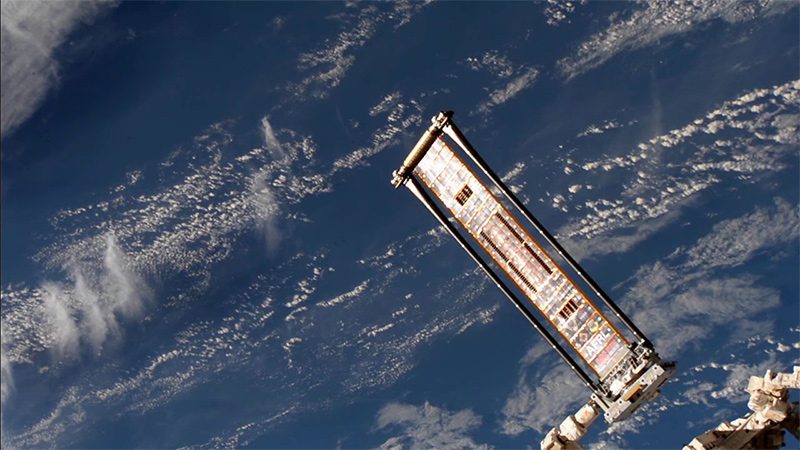Stay Up to Date
Submit your email address to receive the latest industry and Aerospace America news.
The Spacecraft Structures Technical Committee focuses on the unique challenges associated with the design, analysis, fabrication and testing of spacecraft structures.
Astronauts need enough electrical power to operate a base camp on the surface of Mars — as well as stay warm and connected with Earth — so NASA’s structures and power experts spent 2017 developing concepts for large lightweight deployable solar arrays for the surface of the red planet.
Experts from NASA’s Langley Research Center and Glenn Research Center began working on solar array concepts in October 2016 and aim to continue their design work in 2018. Type 1 arrays with about 1,000 square meters of area would deploy from Mars surface landers to supply 10 kilowatts of nighttime electrical power and 50-80 kilowatts of daytime electrical power near the equator, depending on the seasonal factors on the Martian surface. NASA is also eyeing how to develop Type 2 arrays that are easily transported from landers to remote sites to recharge human-occupied rovers and Type 3 solar arrays with flexible packaging that can squeeze into unused spaces on landers for emergencies. The project is partnering with small businesses and an annual design competition for undergraduate and graduate students called the 2018 Breakthrough, Innovative, and Game-changing Idea Challenge.
A project that aims to answer the electricity needs of human space exploration was also put to the test in June, when the International Space Station’s robotic arm facilitated the unfurling of the photovoltaic cells mounted on a composite fabric called the Roll Out Solar Array, or ROSA.
ROSA operated June 17-25 so the Air Force Research Laboratory, which is leading the experiment, could measure its behavior and power production performance in the combined microgravity and extreme thermal environment of space. Unlike existing rigid panel solar arrays, ROSA shrinks mass by 33 percent and takes up 400 percent less volume during storage when rolled up. On June 18, ROSA unfurled under the power of the stored strain energy in the composite slit-tube booms, a thin mesh blanket of photovoltaic cells into a stiff solar sheet. It operated nominally even after 10 months of storage, launch and 215 on-orbit thermal cycles. The Department of Defense Space Test program, NASA and Deployable Space Systems Inc. are partnering with AFRL on this project.
The NASA-funded Jet Propulsion Laboratory and the Indian Space Research Organization are also prepared to complete critical design reviews in November of key parts for its joint radar project to monitor changes in the Earth’s cryosphere, ecosystem and surface. The NASA-ISRO Synthetic Aperture Radar mission, which passed its preliminary design review in 2016, aims to keep a watchful eye on Earth with a dual frequency L-band and S-band polarimetric radar. India will provide a geosynchronous satellite launch vehicle with a 4-meter fairing, an I-3K spacecraft bus and the S-band radar electronics. NASA will assemble the radar payload, which includes the Radar Instrument Structure, L-Band radar electronics and the radar antenna. The antenna includes the S and L patch antenna arrays, a 9-meter deployable boom and a 12-meter deployable mesh reflector to serve as the RF aperture for both frequencies. The reflector and the boom assemblies had been poised to complete their reviews in November as a key step toward flight production. The spacecraft has a proposed launch date of December 2021.
The Spacecraft Structures Technical Committee’s Handbook of Testing Large, Ultra-Lightweight Spacecraft, slated for publication by AIAA in late 2017, will provide both the theory and especially the practice of testing these unique spacecraft for project managers and technical specialists.
Related Posts
Stay Up to Date
Submit your email address to receive the latest industry and Aerospace America news.




